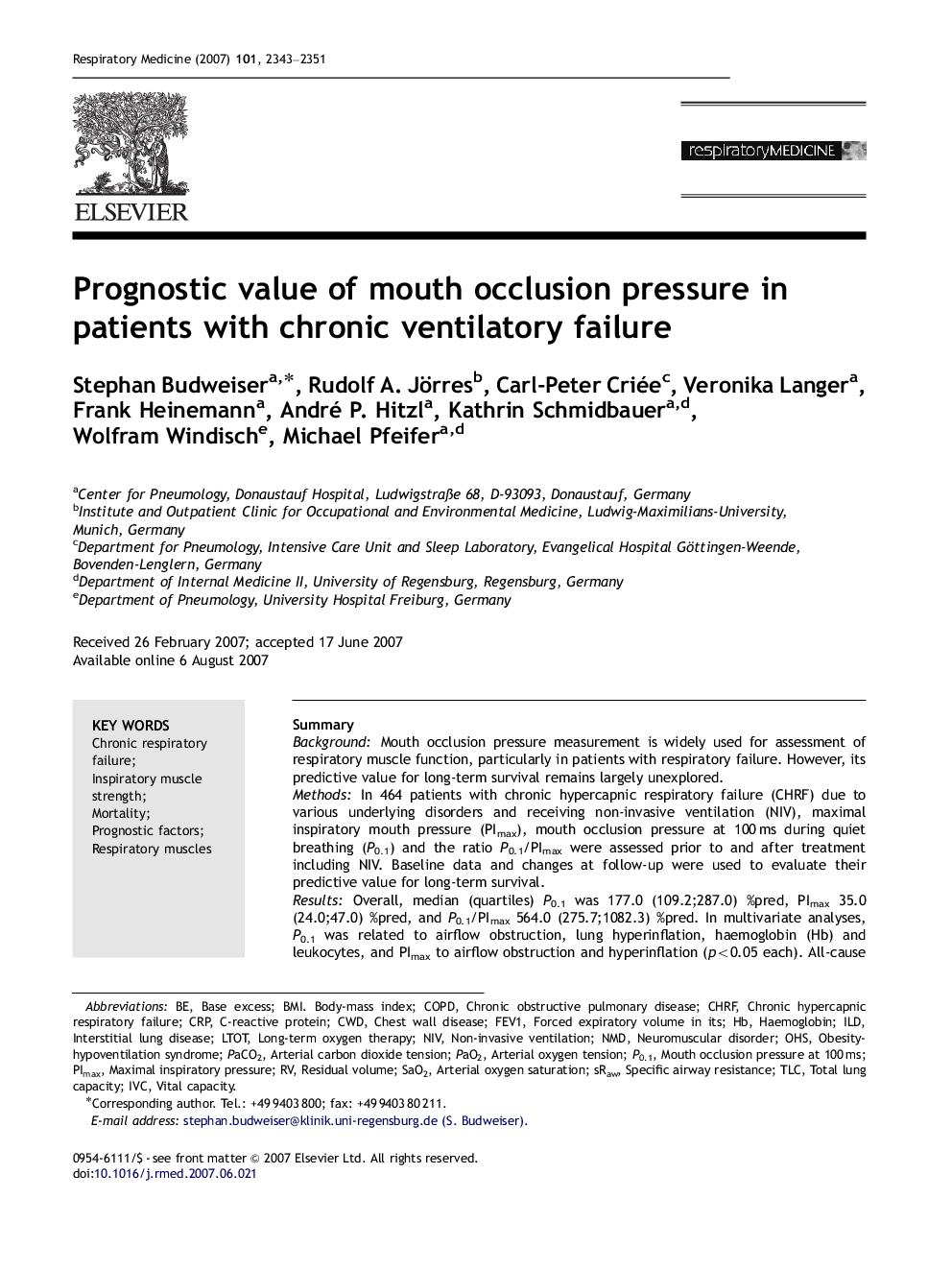| کد مقاله | کد نشریه | سال انتشار | مقاله انگلیسی | نسخه تمام متن |
|---|---|---|---|---|
| 4211842 | 1280653 | 2007 | 9 صفحه PDF | دانلود رایگان |

SummaryBackgroundMouth occlusion pressure measurement is widely used for assessment of respiratory muscle function, particularly in patients with respiratory failure. However, its predictive value for long-term survival remains largely unexplored.MethodsIn 464 patients with chronic hypercapnic respiratory failure (CHRF) due to various underlying disorders and receiving non-invasive ventilation (NIV), maximal inspiratory mouth pressure (PImax), mouth occlusion pressure at 100 ms during quiet breathing (P0.1) and the ratio P0.1/PImax were assessed prior to and after treatment including NIV. Baseline data and changes at follow-up were used to evaluate their predictive value for long-term survival.ResultsOverall, median (quartiles) P0.1 was 177.0 (109.2;287.0) %pred, PImax 35.0 (24.0;47.0) %pred, and P0.1/PImax 564.0 (275.7;1082.3) %pred. In multivariate analyses, P0.1 was related to airflow obstruction, lung hyperinflation, haemoglobin (Hb) and leukocytes, and PImax to airflow obstruction and hyperinflation (p<0.05 each). All-cause mortality during follow-up (median 31.6 months) was 31.5%. Survival was associated with age, body-mass index (BMI), lung function, leukocytes, Hb, PImax, P0.1 and P0.1/PImax (p<0.01 each, univariate). Among these multivariate Cox regression identified age, BMI, FEV1, leukocytes and P0.1/PImax as independent predictors (p<0.05 each). Furthermore, the decrease of P0.1/PImax at follow-up was associated with improved survival in patients with high baseline P0.1/PImax (>50th or 75th percentile; p<0.05).ConclusionsIn patients with CHRF and current NIV therapy, P0.1/PImax was an independent predictor of long-term survival, in addition to previously established risk factors. Moreover, a decrease in P0.1/PImax after treatment including NIV was associated with an improved survival in patients with high baseline P0.1/PImax values.
Journal: Respiratory Medicine - Volume 101, Issue 11, November 2007, Pages 2343–2351